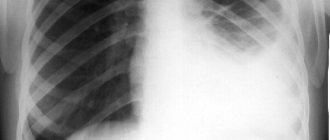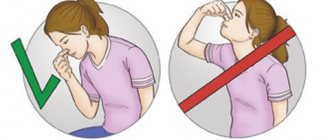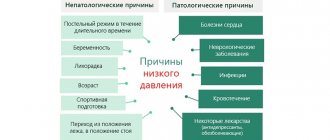These figures could be less frightening if the victims had time to receive professional, timely assistance.
To attract public attention to the problem, Red Cross and Red Crescent activists initiated the celebration of World First Aid Day. Traditionally, this holiday is celebrated on the second Saturday of September; this year it falls on the 12th. To support this event, we will talk about how to help someone who is fainting.
General information
Fainting is also called syncope (this word comes from the Latin word syncope, which, in fact, is translated as “fainting”). The definition of fainting is as follows: it is an attack of loss of consciousness for a short time, associated with temporarily disrupted cerebral blood flow, in which a person loses the ability to maintain an upright position. The ICD-10 code is R55 fainting (syncope) and collapse.
Fainting and loss of consciousness - what's the difference?
However, unconsciousness is not always fainting. The difference between fainting and loss of consciousness is that an unconscious state can develop not only due to a deterioration in the blood supply to the brain, but also due to other reasons.
You can talk about fainting in the following cases:
- The man completely lost consciousness.
- This condition happened suddenly and quickly disappeared.
- Consciousness returned independently and without consequences.
- The patient could not maintain a vertical body position.
If at least one of these points does not correspond to what happened, it is important to conduct an examination to determine the reason for the fainting condition.
Syncope, which is characterized by one or two of the points described above, is sometimes mistakenly considered to be syncope. The condition of syncope may be accompanied by severe manifestations: epilepsy , stroke , heart attack , metabolic disorders, intoxication, cataplexy, etc. In the description, which indicates the ICD-10 code for syncope, a number of manifestations are noted that have similar symptoms, but are not syncope.
When to call an ambulance if you faint
Dial 103 immediately if an unconscious person exhibits any of the following Fainting Treatment symptoms:
- fainting lasts longer than a minute;
- the victim has blue lips and face;
- it seems to you that the victim is not breathing and/or has a pulse;
- the person has regained consciousness, but complains of an irregular or too slow heartbeat;
- there are complaints of chest pain and difficulty breathing;
- after fainting, a person falls asleep, it is difficult to wake him up;
- during or after fainting, seizures, convulsions are observed, the person makes uncontrolled movements;
- the victim has regained consciousness, but complains of blurred vision, difficulty speaking, and confusion;
- a person was injured in a fall or you have reason to suspect it.
Do not under any circumstances hope that any of these signs will go away on their own. These symptoms indicate that the heart is not working properly. If help is not provided in time, the matter may end in death.
Pathogenesis
The basis of the pathogenesis of syncope is transient cerebral hypoperfusion , which develops suddenly. Normal cerebral blood flow is 50-60 ml/100 g of tissue per minute. A sharp decrease in cerebral blood flow to 20 ml/100 g of tissue per minute and a decrease in the level of blood oxygenation leads to the development of syncope. If cerebral blood flow suddenly stops for 6-8 seconds, this leads to complete loss of consciousness.
The mechanisms for the development of this phenomenon may be as follows:
- There is a reflex decrease in the tone of the arteries or the functioning of the heart is disrupted, which leads to a deterioration in blood flow.
- tachycardia , bradycardia occur sharply , and episodic cardiac arrest is noted.
- The development of changes in the heart, due to which blood flow is disrupted inside the heart chambers.
- The level of systemic blood pressure - syncope develops with a sharp decrease in the level of systolic blood pressure.
- In older people, this is often associated with narrowing of the blood vessels that supply the brain, as well as heart disease.
- In young patients, fainting is most often associated with dysfunction of the central nervous system or mental disorders - so-called reflex fainting .
Consequently, the development of such a condition due to various reasons is due to different mechanisms of manifestation of deteriorated cerebral circulation. To summarize, the following mechanisms can be distinguished:
- Decreased or loss of vascular tone.
- Reduced flow of venous blood into the heart.
- Reducing the volume of blood circulating in the body.
- Insufficient ejection of blood from the left or right ventricle of the heart into one of the circulation circles, which leads to disruption of cerebral blood flow.
Taking into account the pathophysiological mechanisms, the following types of syncope are distinguished.
Neurogenic
The most commonly developed variety. In most cases, they are not associated with serious illnesses and do not pose a danger to humans. So-called essential syncope sometimes occurs in healthy people, and its causes remain unknown. However, as a rule, they develop in overly emotional individuals against the background of a psychovegetative syndrome. They are associated with a violation of the neurohumoral regulation of the cardiovascular system, which develops due to dysfunction of the autonomic nervous system.
In turn, there are several types of this type of fainting:
- Vasodepressor or vasovagal syncope - this condition develops most often, in about 40% of cases. This occurs due to transient failure of autonomic regulation of the cardiovascular system. Vasovagal syncope begins with an increase in sympathetic tone. This increases blood pressure, heart rate and systemic vascular resistance. Next, the tone of the vagus nerve increases, which entails hypotension. Develops as the body's reaction to stress. It can be triggered by a number of reasons - fatigue, alcohol consumption, overheating, etc.
- Orthostatic - syncope of this type develops mainly in older people, in whom the volume of circulating blood does not correspond to the instability of vasomotor function. In addition, many older people take medications to lower blood pressure, vasodilators, and antiparkinsonian medications, which can lead to the development of orthostatic syncope. It develops when a person very quickly moves from a horizontal to a vertical position.
- Hypovolemic - develops when a person loses a lot of blood due to dehydration (severe vomiting, diarrhea, dry fasting). This results in hypotension , decreased venous return to the heart, and ineffective cerebral blood flow.
- Sinocaratoid - develops if a person has high sensitivity of the carotid sinus. It most often occurs in older men with atherosclerosis and hypertension. Such syncope may be associated with irritation of the carotid sinus when turning the head, wearing tight ties, etc.
- Situational - happens in stereotypical situations - coughing, swallowing, eating, etc. Associated with high sensitivity of the vagus nerve, reflex reactions to irritation and pain.
- Hyperventilation is a consequence of excessive breathing.
Cardiogenic
This type of loss of consciousness is diagnosed in approximately 20% of cases. It develops due to “cardiac” reasons - a decrease in cardiac output, which develops as a result of a decrease in heart rate or stroke volume of the heart. Occurs in diseases of the heart and blood vessels. They are divided into fainting due to arrhythmias and due to obstructive processes in the left half of the heart. In turn, arrhythmogenic syncope is divided into:
- Bradyarrhythmic - syncope conditions develop with a sharp decrease in heart rate to below 20 beats per minute or with asystole lasting longer than 5-10 s.
- Tachyarrhythmic - develops with a sudden increase in heart rate to more than 200 per minute.
Cerebrovascular
A consequence of cerebrovascular diseases with stenotic lesions of the main arteries, metabolic disorders, and the use of certain drugs. In addition, this type of loss of consciousness may be associated with transient ischemic attacks, which occurs most often in older people.
Non-syncopeal forms of short-term loss of consciousness are also distinguished . In some forms of epilepsy, a brief loss of consciousness occurs when the person loses normal motor control, causing them to fall. However, a short-term loss of consciousness for a few seconds is a condition that may be associated with the reasons described above.
Taking into account the pace of development and duration, the following types of disorders of consciousness are distinguished:
- Sudden and short-term (loss of consciousness for a few seconds).
- Sharp and prolonged (for several minutes, hours or days);
- Gradual and prolonged (for a period of several days);
- With unknown beginning and duration.
Causes of presyncope
Fainting and pre-fainting conditions most often occur due to insufficient blood supply to the brain and its oxygen starvation.
- Low blood pressure (especially a sharp drop)
- Anemia of various origins (decreased hemoglobin levels in the blood)
- Blood loss (injury, internal bleeding, including prolonged or heavy menstruation)
- Overwork
- Heatstroke or sunstroke
- Dehydration
- Hunger and low blood sugar
- Taking certain medications (including oral contraceptives)
- Pregnancy
- Bronchial asthma
- Heart disease, especially arrhythmia and bradycardia, coronary heart disease, defects (more often manifested after physical activity)
- Liver or kidney failure, hepatitis
- Helminthiasis and other parasitic diseases
- Signs of intoxication of the body due to the development of infection or poisoning (chemicals, carbon monoxide, alcohol)
- Thyroid diseases
- Autonomic neuropathy
- Mechanical impairment of free blood flow to the brain, vertebral artery syndrome (osteochondrosis, cervical spondylolisthesis, Arnold-Chiari malformation)
- Acute emotional experience, panic attack
- Abrupt change of position (from horizontal to vertical) and weakness of the vestibular apparatus
- Unusual intense physical activity
Causes of fainting
The causes of loss of consciousness are associated with various diseases and conditions of the body. Thus, sudden loss of consciousness can be associated with diseases of various body systems - nervous, endocrine, respiratory, cardiovascular, as well as with other phenomena - taking medications, excessive physical activity, overheating, etc.
Speaking about what causes people to faint, we can distinguish the following groups of reasons:
- “Benign”, that is, not associated with serious problems. When answering the question of what causes you to faint, you should not discount some natural causes that lead to a short-term cessation of oxygen supply to the brain. This, for example, can happen if a person stands for a long time or lies in a forced position, abruptly gets up from a lying position or unbends. Frequent fainting due to this reason is typical for some pregnant women, elderly people, patients with varicose veins and atherosclerosis.
- Associated with hypotension. People who have low blood pressure often lose consciousness compared to those whose blood pressure levels are normal. Fainting is highly likely to develop in those who suffer from vegetative-vascular dystonia, due to which regulatory vascular mechanisms are disrupted. In such people, the impetus for the development of syncope can be severe stress, severe pain, etc.
- As a consequence of problems with the cervical spine . With osteochondrosis of this part of the spine, the venous outflow and blood supply to the brain are disrupted. Sudden fainting in this case is possible due to sudden turns of the head or squeezing of the neck.
- Consequence of cardiac arrhythmia. The answers to the question of why people faint may be more serious. One of these causes is arrhythmia, in which the rhythm, frequency or sequence of heartbeats is disrupted. This can happen with high blood pressure as a result of tachycardia. In this case, it is important to consult a doctor so that he can determine whether loss of consciousness is a symptom of what disease. In people with heart and vascular diseases, loss of consciousness is a symptom that requires an immediate visit to a specialist.
- Pulmonary embolism . This is a very serious condition in which the pulmonary artery is blocked by a blood clot that has broken off from the walls of the vessels of the lower extremities.
- Pregnancy. Causes of fainting in women may be related to pregnancy. Often expectant mothers experience hypotension due to hormonal changes in the body or, conversely, increased blood pressure due to impaired blood flow. Physiological changes in the body can also lead to loss of consciousness in women. As the unborn baby grows, the amount of blood circulating in a woman’s body increases, and while he adapts to such changes, this can lead to fainting. This is also possible due to toxicosis . In girls, syncope due to changes in the body can appear during puberty.
- Powerful emotions. In both men and women with psycho-vegetative instability, syncope can occur under severe stress, nervous shock and an excess of emotions. In this case, the answer to the question of how to cause fainting is simple. A susceptible person can bring himself to such a state with elementary things for others, since, for example, the sight of blood or an emotional quarrel can provoke syncope in them. In this case, a person may experience a state of “As if I’m going to faint” for a short period, after which syncope occurs. You should ask your doctor about how to prevent fainting in this case.
- Development of tumors in the brain. In this condition, the patient’s tumor compresses the blood vessels and nerve endings, resulting in fainting with convulsions, and such attacks are repeated quite often. This is a very alarming syndrome that should be addressed to a doctor immediately.
- Epilepsy . The causes of loss of consciousness and seizures may also be associated with epilepsy. In this case, episodes of loss of consciousness and convulsions appear suddenly. Although attacks can occur without convulsions. The so-called petit mal seizure is a condition where there is a loss of consciousness with the eyes open. It lasts for several seconds, while the patient’s face turns pale and his gaze focuses on one point. The disease requires complex treatment that will help reduce the number and frequency of attacks.
In addition, if an adult or child faints, the reasons may be as follows:
- Taking a number of medications - antidepressants, nitrates, etc.
- Poisoning with toxins , alcohol, carbon monoxide.
- Anemia.
- Bleeding – uterine, gastrointestinal, etc.
- Neuroinfection.
- Liver and kidney failure .
- Diseases of the heart and blood vessels.
- Metabolic disorders.
- Neurological diseases.
Treatment
First aid for fainting consists of clearing the airways and placing the patient on a flat surface with the legs raised and the head turned to the side to prevent the tongue from retracting. The elevated position of the lower extremities will help increase blood flow to the brain. Irritating substances are also used, for example, ammonia or cold water on the face.
Drug therapy is based on the use of drugs that increase blood pressure and vascular tone, such as cordiamine and ephedrine.
Symptoms and signs of fainting
Very often, syncope occurs suddenly. But sometimes signs of fainting can be noticed in a timely manner and loss of consciousness can be prevented. When you feel faint, the following symptoms appear:
- excessive sweating;
- impending nausea;
- pale skin;
- dizziness and sudden manifestation of severe weakness;
- darkening in the eyes, the appearance of “floaters” before the eyes;
- noise in ears;
- frequent yawning ;
- numbness of arms and legs.
If such symptoms are noticed in a timely manner and immediately sit down or lie down, the blood in the vessels will quickly be redistributed, the pressure in them will decrease, and syncope can be prevented. If fainting does occur, then the person will at least protect himself from falling.
The immediate signs of fainting in a person are as follows:
- Extremities become cold.
- The pulse slows down.
- The pupils will dilate or constrict.
- The pressure decreases.
- The skin turns pale.
- The person breathes irregularly and at a lower rate than usual.
- The muscles suddenly relax.
- With prolonged syncope, the muscles of the face and torso may twitch.
- There may be severe drooling and dry mouth.
This state does not last long - from a few seconds to 1-2 minutes. In this case, breathing and heartbeat do not stop, involuntary urination and defecation do not occur, and there is no urge to vomit.
The symptoms of hungry fainting, which occurs due to a lack of nutrients in the body, are similar. Hunger fainting occurs in those who practice very strict diets or prolonged fasting. Such symptoms indicate that nutrition must be adjusted immediately, since hungry fainting is evidence of a deficiency in the body of substances important for its functioning.
Fainting causes, methods of diagnosis and treatment
Depending on the mechanism of development, the following types of fainting are distinguished:
Vascular syncope
Accompanied by a sudden decrease in vascular tone, a weak but rapid pulse. It mainly occurs in people with vegetative-vascular dystonia. In this condition, there is constantly low blood pressure and anemia. People of asthenic build, children and adolescents during puberty are susceptible to vascular syncope.
Vagal syncope
Loss of consciousness is characterized by a sharp drop in blood pressure, bradycardia, and asystole. A person's heart rate suddenly decreases, causing a decrease in the volume of blood flowing to the brain. Let it slow down, but not weaken. Vagal syncope occurs in people who have a heavy build or are overweight.
Emotional syncope
Such fainting causes severe stress, fear and other negative emotions. They can appear in a healthy person, but are more common in people with neurosis and vegetative-vascular dystonia. First, general tension arises, then there is concern about dryness in the mouth, general weakness, a pressing feeling in the heart area, paleness of the facial skin, difficulty breathing, trembling of the limbs, eyelids or lips.
Cardiogenic syncope
Cardiogenic or cardiac syncope provokes cardiovascular diseases. This type is considered the most dangerous. It is accompanied by a drop in cardiac output below the critical value required for effective blood supply to the vessels of the brain.
Simple fainting
A simple fainting state is characterized by gradual development. Loss of consciousness causes blurred vision, nausea and dizziness. At the same time, blood pressure decreases, the pulse weakens, the pupils become wider and react less well to light, and the skin turns pale. The duration of a simple faint is 25-45 seconds.
Convulsive fainting
Against the background of autonomic dysfunction and low muscle tone, tonic convulsions occur, provoking convulsive fainting. In addition to convulsions, a person may experience blue or redness of the face. Sometimes isolated muscle twitching may occur.
Orthostatic syncope
Occurs when the body rises sharply from a sitting or lying position. Accompanied by darkening of the eyes and loss of coordination. Primary autonomic failure, prolonged bed rest, and sympathectomy predispose to this type of syncope.
Fainting during pregnancy
Presyncope during pregnancy occurs due to three main reasons:
- decreased hemoglobin and the development of anemia;
- low blood pressure;
- lack of circulating blood for the woman and fetus.
Tests and diagnostics
To determine why a person is losing consciousness, the doctor takes the following steps:
- Performs initial condition assessment. To do this, anamnesis is collected or, if necessary, an interview with eyewitnesses is carried out. It is important to find out whether an episode of loss of consciousness or multiple fainting episodes actually occurred.
- Takes into account the likelihood of psychogenic attacks or epileptic seizures and carries out differential diagnosis.
- Orders the necessary studies.
In the diagnostic process, if necessary, the following methods are practiced:
- Physical examination.
- Electrocardiogram.
- Daily ECG monitoring.
- Ultrasound to determine structural changes in the heart.
- Orthostatic test.
- Clinical stress test to determine myocardial hypoxia
- Coronary angiography.
- Blood test with determination of hematocrit, hemoglobin , oxygen saturation, troponin level, etc.
If necessary, other studies and laboratory tests are prescribed.
Procedures and operations
If vasovagal syncope recurs frequently, it is recommended to increase your fluid and salt intake.
People who are prone to reflex fainting are taught to recognize the signs of presyncope and take steps to prevent loss of consciousness. They are also advised to change their lifestyle and avoid the influence of provoking factors.
In some cases, no special treatment is required.
In general, the choice of treatment tactics depends on what specific problem caused the disturbance of consciousness.
Symptoms
The following signs are warning signs of fainting:
- pale skin and sweat on the skin;
- dizziness and ringing in the ears;
- darkening or flickering in the eyes;
- increased heart rate;
- feeling of heat.
Also, the pre-fainting period is characterized by rapid breathing and yawning. In this way, the body tries to compensate for the oxygen deficiency.
Loss of consciousness lasts from several seconds to minutes and is accompanied by a decrease in muscle tone and a drop in blood pressure. Possible addition of isolated convulsions.
Treatment with folk remedies
The use of some folk remedies can help reduce the incidence of syncope. However, these methods are not methods of treating the causes of loss of consciousness, but only auxiliary methods to improve the condition.
- Gentian decoction. To prepare a decoction of this herb, you need to take 2 tsp. crushed raw materials and pour 1 tbsp. boiling water Drink half a glass before each meal.
- Burdock compresses. A fresh burdock leaf should be mashed and placed on the solar plexus. The compress helps you come to your senses after fainting.
- Soothing tea. It helps if a person loses consciousness due to dysfunction of the nervous system. To prepare it, you can take mint, lemon balm, St. John's wort, linden in equal proportions, mix the crushed raw materials, and 2 tbsp. l. pour 2 cups boiling water. After 20 minutes, strain and drink 2 times a day, 1 glass.
- Wormwood oil. Grind 25 g of wormwood seeds in a coffee grinder and pour in 100 g of olive oil. After a day, pour into a dark glass jar and store the product in the refrigerator. Take 2 drops 2 times a day (drop onto sugar).
- Infusion of mountain arnica. 3 tbsp. l. Pour dried arnica flowers into a thermos and pour 200 g of boiling water. After an hour, strain and drink with milk 4 times a day, adding 1 tbsp to 100 g of milk. l. infusion.
- Means for normalizing blood circulation. If loss of consciousness does occur, then after this the person should be given a glass of warm tea or chamomile decoction. Coffee or 1 tbsp will also work. l. cognac to normalize blood circulation.
- Massage of special points. In case of fainting, a massage of the points above the upper lip and under the lower lip will help revive the patient. You need to press hard on them, as sharp pain helps improve blood circulation in the brain. You can also rub the skin in the stomach area for this purpose.
- Cold water. It is sprayed on someone who has lost consciousness. This is especially important if the syncope is caused by overheating. It is recommended to cool the extremities. Also, a person who has come to his senses should drink some cold water in small sips.
How to provide first aid for fainting
When someone loses consciousness in front of you, act like this.
- Make sure the person is breathing and their heart is beating. If not, start resuscitation - mouth-to-mouth artificial respiration and chest compressions.
- Do not attempt to lift or sit the victim. You need to put the person on his back: this will quickly improve blood circulation in the brain.
- Raise his feet about 30cm off the floor. This will again speed up the flow of blood to the head.
- Loosen your belt, tie, collar, and remove or tear any tight clothing that may be obstructing your circulation.
- Tap the cheeks and speak loudly to the victim.
- If you have a first aid kit on hand, bring ammonia Ammonia Aromatic Ampul to the victim’s nose. No other drugs or medications need to be used!
That's it, you did what you could. All that remains is to wait for the unconscious person to come to his senses. Well, or call an ambulance, if there is evidence for it.
First aid for fainting
Everyone should know how to provide first aid for fainting, since such cases can occur in different situations. The correct sequence of first aid actions for fainting is very important, since adequate first aid will help to avoid more serious problems.
The algorithm of actions used to provide emergency care for fainting and loss of consciousness should be as follows:
- If a person faints, then those who are nearby must first lay him down so that his legs are higher than the level of his head and body. This first aid is practiced if the patient is breathing and his pulse is palpable.
- Next, the PMP consists of quickly unfastening those clothes that are constricting the body. We are talking about a belt, a collar, a bra.
- A person needs to put a wet, cold towel on his forehead or simply wet his face with water. Such actions in case of loss of consciousness will help to narrow the blood vessels and restore cerebral blood flow.
- Apply ammonia or strong-smelling cologne to the victim’s nose.
- If the victim is vomiting, his body must be placed in a safe position so that he does not choke, or simply turn his head to the side. Lying on your side will help prevent airway blockage, as syncope can cause the tongue to relax.
- Provided that a person remains unconscious for several minutes, he needs emergency medical care. In this case, most likely, we are not talking about ordinary fainting.
- Nitroglycerin should not be given to a person .
It is important not only to correctly provide first aid in case of fainting, but also to provide first aid after the victim has regained consciousness. What to do after fainting depends on the patient’s feelings. If he still feels dizzy or other unpleasant symptoms, you should leave him lying with his legs elevated. It is worth preparing hot tea or coffee for the victim. Chamomile tea will also work. When the patient feels better, you need to help him get up, doing it slowly and gradually.
First aid for fainting
Despite the fact that adequate first aid in case of loss of consciousness helps the victim to recover quickly, it is still necessary to visit a doctor if such episodes occur frequently. After all, only if the cause of such manifestations is determined can one say exactly what to do in case of fainting and how to cure the cause that provokes it.
It is recommended to call emergency help, since only professionals can distinguish fainting from coma and determine how dangerous the patient’s condition is.
Treatment of presyncope
First of all, you need to know about primary care methods for the onset of presyncope. If you notice that the person next to you suddenly turns pale and begins to “sag”, loses coordination of movements, the pupils dilate sharply and the gaze does not focus, complains of dizziness and tinnitus (or you feel all these symptoms yourself)
- the victim must be carefully seated or laid down so that he does not fall and is not injured during the fall;
- if it is very hot, stuffy, or sunny outside, you need to take the person to a shady and cool place, or at least fan him or her with a fan or a damp towel;
- give cool water to drink: when drinking, the respiratory function is restored, which entails the restoration of the pulse, so the pre-fainting state will pass faster;
- in some cases, you can smell some pungent odor (standard ammonia);
- Give sweet tea to drink to raise blood sugar levels.
If a pre-fainting state occurs extremely rarely and has objective causes (heat stroke, fatigue, sudden change of position), then it does not require treatment. However, syncope is often a symptom of serious neurological and cardiac diseases, so in order not to miss the onset of the development of pathology, it is better to consult a doctor. The Aximed Neurology Clinic suggests visiting a consultation with a neurologist who, based on your complaints and medical history, will prescribe the necessary tests and, based on the results, propose the most effective treatment strategy.
Prevention
To prevent loss of consciousness, the following rules of prevention should be followed:
- Drink enough fluids.
- Do not consume alcohol during the hot season.
- Hypertensive patients need to correctly select medications for treatment by visiting a doctor, and adequately adjust their amount.
- Do not stay in a vertical position for a long time. If there is such a need, you need to constantly shift from foot to foot, tensing your muscles.
- If you feel like you are about to pass out, you should sit or lie down immediately to help distribute blood throughout the body or at least prevent you from falling. If you can’t lie down, you should cross your arms and legs, straining your muscles at the same time.
- Avoid exposure to factors that provoke fainting. We are talking about dehydration, wearing tight clothes, overheating, severe emotional shock, etc.
- Visit your doctor in a timely manner to diagnose the development of diseases in a timely manner. It is important to properly and promptly treat illnesses that cause syncope.
- It is better to sleep in a position where your head is elevated. An additional pillow is suitable for this.
- People with vascular problems should wear compression stockings.
- It is necessary to practice adequate exercise and eat right.
Presyncope: Cases from practice
Female, 22 years old, HR manager.
In 2011, a young girl contacted us. During minor psycho-emotional stress, she often experienced faintness, general weakness, and drowsiness. There was a feeling that she was “about to faint,” but she never completely lost consciousness.
With little physical activity (rising to her feet, turning her body), instability and dizziness, and a feeling of loss of consciousness also occurred. I felt like “the blood was leaving my head to my feet.” I was looking for something for support. I was forced to control my every movement while walking.
The patient also complained of an unreasonable increase in heart rate and sleep disturbance: from time to time she could not fall asleep for a long time at night for no apparent reason.
At first, the patient associated the symptoms of the disease with a drop in blood pressure, but it, as a rule, turned out to be normal or even elevated. The condition of the blood vessels was also normal.
It is obvious that the autonomic nervous system, being in a “shaken” state, did not adapt the processes occurring in the body to minimal physical activity and, even more so, to more complex psycho-emotional stressful situations. The autonomic department of the nervous system did not rebuild the blood vessels instantly and worked at a slow pace. Therefore, such a pathological condition arose.
After one course of treatment, the girl felt much better and did not need repeated treatment.
Woman, 42 years old, translator.
The patient has a history of episodes of dizziness, nausea, and lightheadedness since adolescence. Rare fainting occurred during school, and after a long break, it recurred at the age of 22 and 23 due to stressful situations.
The woman contacted us in 2011. Since 2008, she began to complain of general poor health due to psycho-emotional stress. She experienced a feeling of unsteadiness when walking, dizziness and heaviness in her head.
A few months later, the condition began to gradually worsen: noise in the ears appeared, at times vision decreased: a “veil” appeared before the eyes, a feeling of loss of consciousness arose, waves of heat or cold rolled in. Approximately once a month, the condition worsened sharply: the feeling of nausea reached the point of vomiting.
The woman drew attention to the dependence of her condition on changes in weather factors (meteodependence), as well as on being in a stuffy room.
At the Center for Autonomic Neurology, the patient underwent two full courses of treatment. After the first course, I noted a 70% improvement in my condition. Carrying out a repeat course eliminated all remaining complaints.
Fainting in women
The causes of loss of consciousness in women may be associated with the following problems:
- Internal bleeding as a consequence of diseases of the genitourinary system.
- Too strict dietary restrictions and fasting.
- Pregnancy.
- Too much emotional shock.
It is advisable to consult a doctor if a woman suddenly faints. The reasons for syncope in girls and women are most often harmless. But the development of serious diseases should still be excluded.
What to do after fainting
If the loss of consciousness lasted less than a minute and did not have threatening symptoms (they are listed in the paragraph on calling an ambulance), there is nothing to worry about. You just need to slow down a little, relax, and your body will quickly recover.
However, there are conditions in which you should definitely consult a doctor. You should schedule a visit to a therapist if:
- fainting accompanied by a blow to the head;
- this is the second or more loss of consciousness in the last month;
- a pregnant woman or a person with any cardiovascular diagnosis lost consciousness.
The doctor will conduct an examination and, if necessary, prescribe tests that will help rule out unpleasant diseases.
In children
If a child faints, the causes of this phenomenon may be associated with both diseases and age-related changes. Most often, syncope manifests itself in a teenager, since during this period the process of puberty actively occurs, which leads to changes in the body. As experts who study syncope in children note, girls are more susceptible to fainting. Most often, such manifestations are observed in children aged 10-12 years. Young children lose consciousness very rarely.
Despite the fact that this phenomenon may be temporary, if a teenager often faints, the reasons must be determined by a specialist after conducting a study. It is important to find out whether a child who often faints suffers from epilepsy or other serious illnesses. In most cases, we are talking about the reflex nature of such conditions in children. Potential health hazards are reported relatively rarely. But it is still better to consult a doctor and follow his advice.
Fainting during pregnancy
This condition may be one of the signs of pregnancy. Dizziness and fainting during early pregnancy can occur as early as a few weeks after conception and be a reason for a test.
The answer to the question of why pregnant women faint is the changes that occur in the female body from the first days of pregnancy. Loss of consciousness during pregnancy occurs due to a sharp decrease in blood pressure provoked by hormonal changes. Most often, fainting during pregnancy occurs in women suffering from hypotension .
Various factors can lead to a drop in blood pressure during pregnancy - severe stress, exacerbation of chronic diseases, colds , overwork. Also, the cause of loss of consciousness can be a sharp drop in blood sugar, which occurs due to poor nutrition or malnutrition.
If such a phenomenon occurs once, it should not cause much concern to the expectant mother. But if syncope occurs systematically, you should definitely tell your doctor about it.
To avoid such unpleasant manifestations, the expectant mother should follow some important rules:
- Do not stay for too long in places where it is very hot and stuffy, do not travel in the heat on public transport.
- Do not starve: nutrition must be correct, you need to eat often and in small quantities.
- Do not get up abruptly from a sitting or lying position - this should be done slowly and smoothly.
- Walk more in the fresh air and get a good night's sleep.
- Do not be alone if you are prone to dizziness and loss of consciousness.
Types of presyncope
There are several types of fainting and pre-syncope, depending on the mechanism of their development:
- Vaso-vagal syncope (vascular), occurs due to a sharp decrease in vascular tone. A weak but frequent pulse is characteristic. Most often, a prefainting state develops with VSD and is accompanied by constantly low blood pressure (90/60) and anemia. Usually found in people of asthenic physique, children and adolescents during a period of rapid growth.
- Vagal syncope. The vagus nerve causes a sudden decrease in heart rate, which reduces the amount of blood flowing to the brain. The pulse does not weaken, but slows down. It is more common in people who have a heavy build or are overweight.
- Emotional fainting can develop in any person due to an acute emotional experience or sudden fear.
- Cardiogenic fainting (cardiac) is provoked by diseases of the cardiovascular system and is considered the most dangerous (in terms of the causes that cause them).
- Orthostatic fainting. Sharp darkening of the eyes and loss of coordination when changing position (most often, a sharp rise from a lying or sitting position).
- Fainting during pregnancy. There are three main causes of presyncope during pregnancy:
- Often during gestation, women develop anemia, i.e. there is a sharp lack of hemoglobin and brain tissue does not receive the required amount of oxygen;
- with low blood pressure, the blood “does not rise” to the pregnant woman’s head; in a horizontal position, the symptoms of a pre-fainting state disappear;
- There are rare cases when the volume of the mother's circulating blood is not enough for her and the fetus together.
In addition to those listed, there are many more types of fainting: hypoglycemic, provoked by a tight collar or shortness of breath, as a manifestation of subclavian steal syndrome, and others.
Diet
Diet for the nervous system
- Efficacy: therapeutic effect after 2 months
- Timing: constantly
- Cost of food: 1700-1800 rubles per week
Nutrition for people prone to fainting should be complete and varied. To choose the right diet, first of all, you need to find out the cause of such manifestations. The diet is formed depending on the presence or absence of heart disease, vascular disease, diabetes mellitus , etc. The basic nutritional rules should be as follows:
- The menu should be dominated by fresh and properly processed products.
- The diet should be varied to provide the body with essential microelements and vitamins .
- It is better to eat food 5-6 times a day in small portions to prevent the feeling of extreme hunger.
- If the state of the body allows, you need to introduce as many vegetables and fruits into your diet as possible.
- Proper drinking regime is necessary, because dehydration can also cause fainting.
If a person experiences reflex fainting, he should adhere to the principles of a diet for the nervous system .
Causes of fainting
A general feeling of weakness is a very common symptom of autonomic nervous disorder. The feeling of weakness can be chronic (chronic fatigue syndrome) or appear suddenly during everyday physical and psycho-emotional stress. A person suddenly experiences instability, dizziness, nausea and other symptoms of an autonomic disorder, depending on the degree of its neglect. This happens because the autonomic nervous system experiences difficulties in functioning and has difficulty adapting the body to the slightest load.
Consequences and complications
The consequences of such a condition depend on the causes of its occurrence. The most serious consequences may be:
- Development of coma and cerebral edema , which leads to disorders of important life functions.
- Suffocation due to retraction of the tongue in an unconscious state.
- Various injuries received during a fall.
With frequent manifestations of this condition, a person sometimes has to change his occupation.
Forecast
According to medical statistics, in approximately 93% of cases, benign fainting occurs with a favorable prognosis, which does not require drug treatment.
An unfavorable prognosis is observed in those patients in whom fainting is provoked by cardiovascular disease . These people are at risk of death due to heart problems. Risk factors for sudden death in patients with syncope are as follows:
- Age over 45 years.
- Ventricular arrhythmias.
- Heart failure.
- The presence of pathological changes on the ECG, which indicate arrhythmogenic disorders.
- Myocardial infarction.
- Hypertrophic cardiomyopathy.
- Arrhythmogenic right ventricular cardiomyopathy.
List of sources
- Bova A.A. Syncope in clinical practice: educational method. allowance. – Mn.: Asobny, 2009. – 45 p.
- Autonomic disorders: Clinic, treatment, diagnosis / ed. AM Wayne. – M., 1998. – 752 p.
- Guseva I.A., Bondareva Z.G., Miller O.N. Causes of syncope in young people // Ros. cardiology journal. - 2003. - No. 3. — P. 25-28.
- Stykan O.A. Akimova G.A. Differential diagnosis of nervous diseases: a guide for doctors. - St. Petersburg: Hippocrates, 2000. - P. 132-177.











